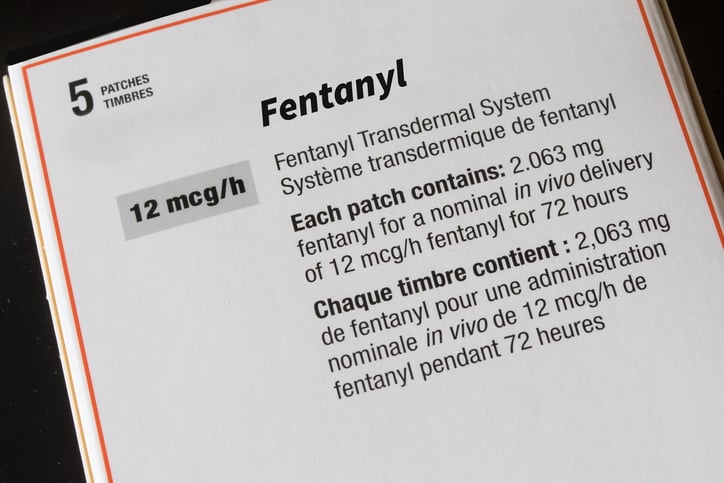Drug abuse and overdose epidemics go through trends. In the 1970s, heroin was a major problem in the United States. In the 1980s, it was cocaine. Today, it is opioids, synthetic but potent drugs frequently found in pain medication. Fentanyl is a very potent opioid that doctors prescribe for extreme pain. However, illegal drug manufacturers are creating stronger and stronger strains to sell on the streets.
Fentanyl is 50 times more powerful than heroin and up to 100 times more potent than morphine. It is responsible for many deaths, often because the user isn’t aware that the heroin they purchased contained fentanyl. To make matters worse, drug traffickers are making strains of fentanyl that are stronger and more dangerous. Of course, when there are strong drugs available on the street, more people are at risk for abuse and overdose. They are also at risk of becoming resistant to emergency overdose drugs.
Strains of Fentanyl
According to a Special Report published by the National Drug Early Warning System (NDEWS), there are over 15 versions of fentanyl. Chemically speaking, a strain of fentanyl is also known as a structural analog or simply analog. An analog is a compound with a similar chemical structure to another but is different in one or two components, changing the drug’s effect or other characteristics. Analogs of fentanyl include:
- 3-Methylfentanyl (TMF) – This drug is responsible for an opioid epidemic in Estonia and overdoses in California between 1984 and 1985. Typically, it has only seen short epidemics because of its significant potency.
- 3-Methylthiofentanyl – This drug was sold on the black market in the 1980s. It was also responsible for deaths in Eastern Europe.
- Acetyl Fentanyl – Acetyl Fentanyl is also known as desmethyl fentanyl. It requires a stronger dose of Naloxone to save a life. It is 5 to 15 times stronger than heroin. Users typically use it intravenously as a direct substitute for heroin or painkillers. However, those who use it may suffer severe consequences because of its potency.
- Acryl fentanyl – Unlike other forms of fentanyl, which may be used medically, acryl fentanyl has no medical purpose. According to reports, this drug is resistant to Narcan, a life-saving opioid overdose reversal drug.
- Alfentanil – This drug has approximately 1/4 to 1/10 the strength of fentanyl and roughly 1/3 of duration. However, the onset of its effects is roughly 4 times faster than fentanyl.
- Butyrfentanyl – This is a strong, fast-acting drug with roughly 1/4 the potency of fentanyl.
- Carfentanyl – They created this drug for medical purposes, but its potency drug dealers also sell in illegally. The U.S. Drug Enforcement Agency issued a warning about this drug late last year. Carfentanyl is 100 times stronger than fentanyl and 50 times stronger than heroin.
- Para-fluorofentanyl – Janssen Pharmaceuticals developed this drug in the 1960s. This strain of fentanyl substitutes para-flouraoaniline for aniline in its makeup.
- Remifentanil – Physicians frequently use Remifentanyl during surgery to relieve pain. It is twice as strong as fentanyl and up to 200 times stronger than morphine.
- Sufentanil – Physicians use this drug for medical purposes, and it can be up to 10 times stronger than fentanyl and 500 stronger than morphine.
- Ocfentanyl – Drug dealers commonly sell Ocfentanyl as heroin on the street, but it’s actually much stronger, leading to overdoses and deaths. Ocfentanyl is a naloxone-reversible substance.
What are Designer Drugs?
When labs alter drugs slightly from their original form, they become designer drugs. The list above represents some of the fentanyl strains, which are designer drugs. Illegal labs often create these drugs to be stronger so that users will continue to crave more; in some cases, they add dangerous ingredients and are unaware of the risks. For instance, Spice is a designer drug containing marijuana, household cleaning products, and even lighter fluid. Those addicted to drugs often do not evaluate the risks due to the effects of long-term drug exposure that significantly affect brain function. Seeking and taking the drug becomes both compulsive and repetitive.
Getting Treatment for a Drug Addiction
When it is time to get the help you need for drug addiction, you typically start with an efficient and safe detoxification process. This is the preliminary step to begin any form of recovery. The most successful drug detox available is at the individualized and medically supervised centers. A private and comfortable environment, combined with a dedicated licensed medical staff, can provide the most thorough care needed through the detoxification process. A medically supervised detox is essential in opioid-based drugs, which can cause a severe physiological withdrawal.
Once you detox from opioid-based drugs, you could still experience some negative symptoms, both physically and mentally. That is why so many people continue to abuse opioids or relapse soon after detox. An important part of a detox process is to stabilize individuals. It is crucial to provide patients with a comfortable and safe place, surrounded by caring and knowledgeable professionals, to navigate this regulating phase safely.
The Waismann Method® have combined a superior medical opioid detoxification in a full-service hospital with an exclusive and private recovery retreat. We believe that there is no therapeutic reason for unnecessary suffering or public judgment. People have different histories, difficulties, and needs that should be met and respected.
We believe in treating one patient at a time so they are carefully heard and properly understood. Providing drug treatment with unwavering respect and empathy is how we achieve success.














